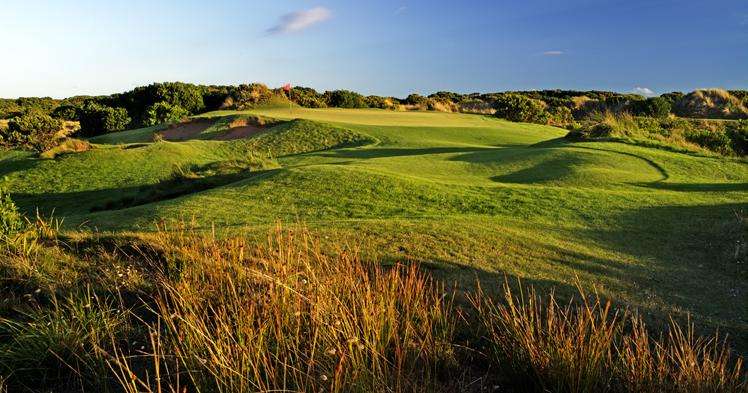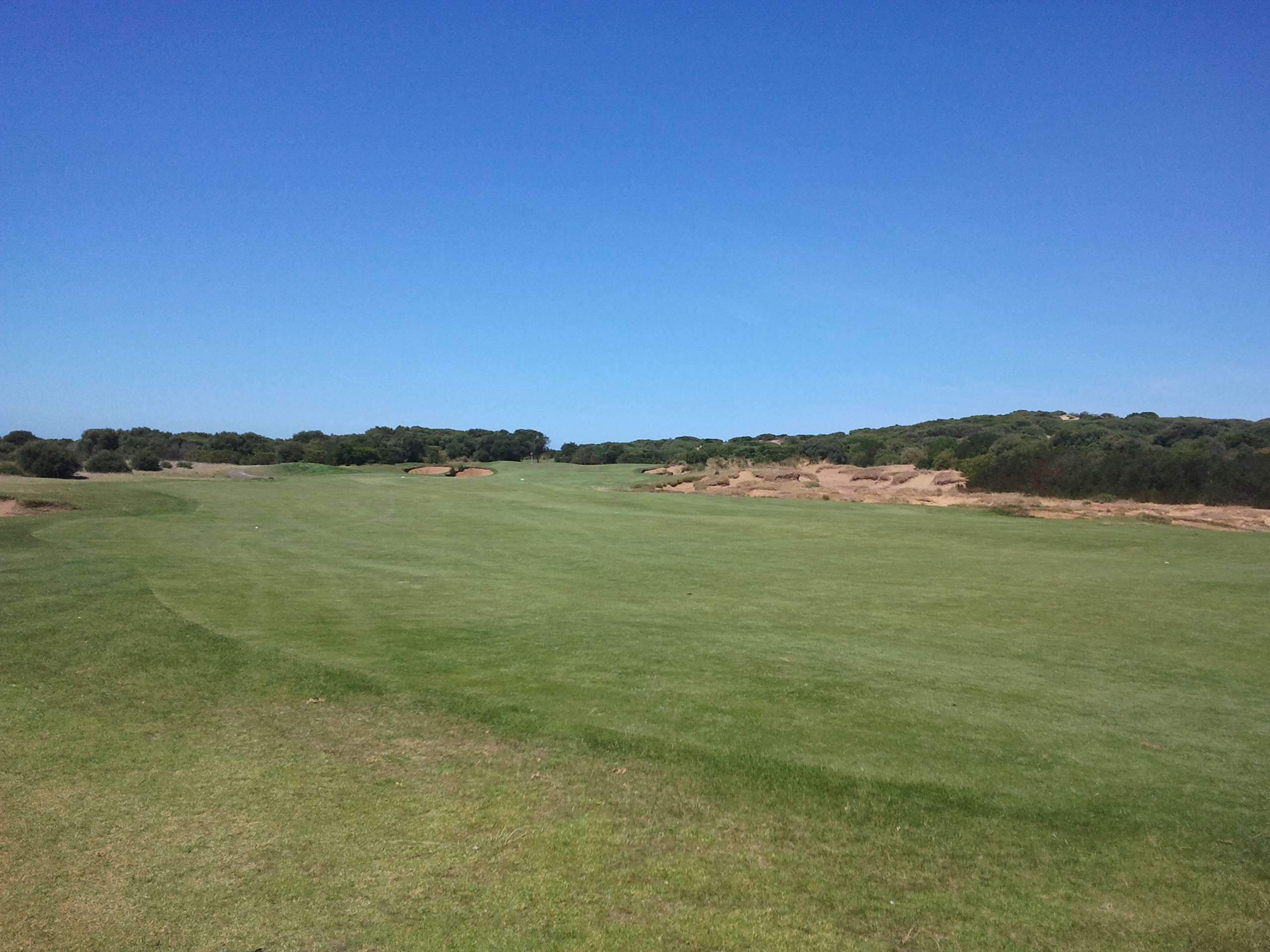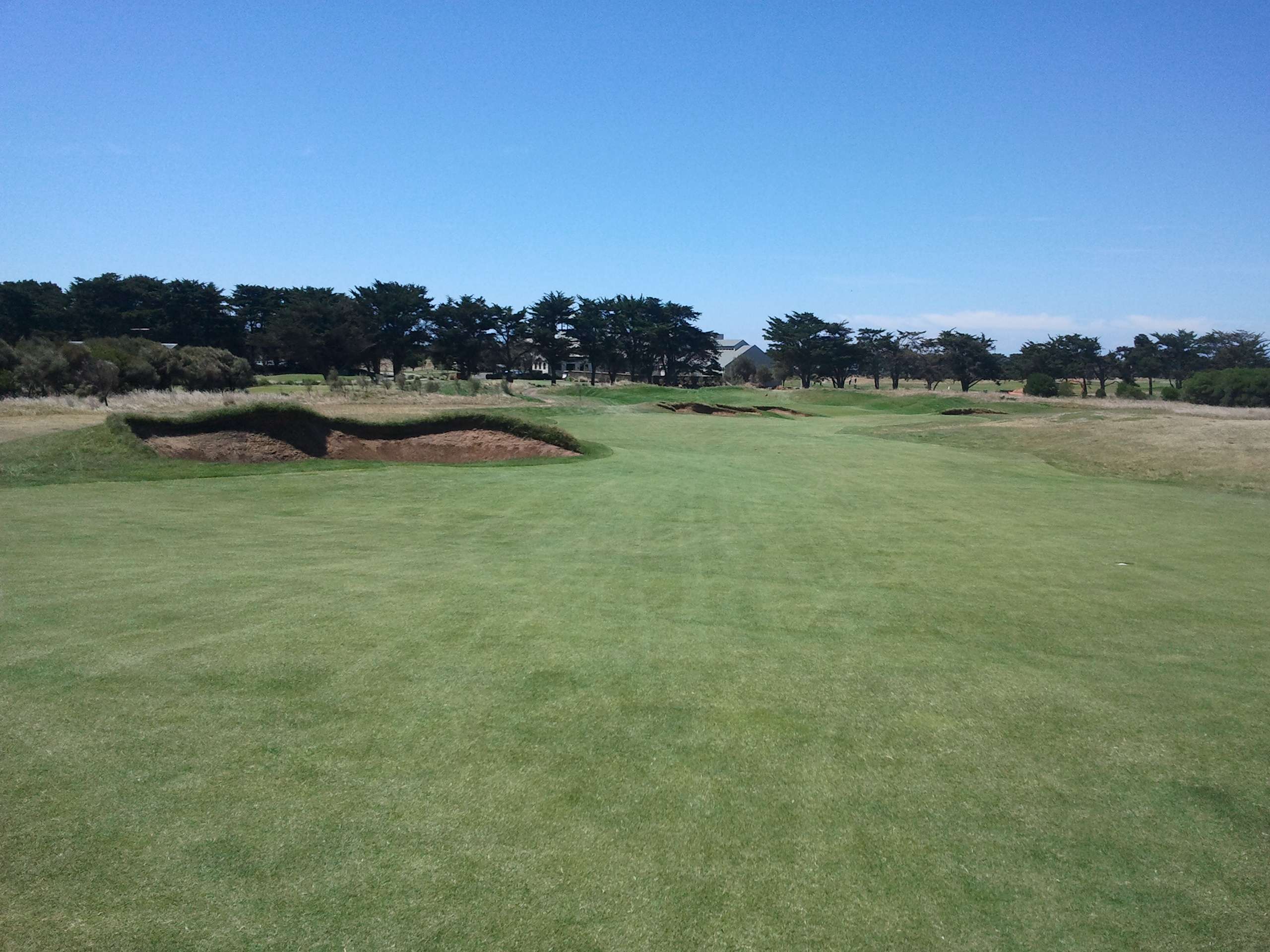



Course name: Thirteenth Beach (Beach)
Location: Barwon Heads, Victoria, Australia
Four Word Course Review: Interesting, surprising, but over-bunkered
One of the great things about courses from the 1800s and the first third of the 20th Century is how regularly they feature something unexpected -- often utilising a landform or natural feature that too often in the modern era would be manipulated, filled or flattened.
Thirteenth Beach came to life alongside Barwon Heads GC less than a decade ago, designed by Tony Cashmore, and takes its name from the beach named after its neighbour course's fantastic back nine drop-shot par three.
Despite being so new, the course features regular surprises in the way the land is used that would evoke feelings of the Golden Age were it not for the surplus bunkers on almost every hole that reminds you this was built in the era of ample access to earthmoving.
Too regularly there are two or three bunkers where one would suffice and in the unfortunate example of the par five 14th, ridiculous "mushrooms" that litter an otherwise imposing hillside drive bunker. That detracts significantly from a hazard that could have been a real feature, the way similar sprawling excavations are highlights of the 1st, 9th and 17th.
Perhaps if Cashmore had been forced to dig all his bunkers himself with a shovel, that largesse could have been avoided...
But it's important not to get too hung up on the overload of bunkering, because there is so much to like about the golf course, not least of all the way it uses some wonderful, sandy seaside land and maximises the lesser areas of the property with features like the strategically strong par four 2nd hole (despite the overbunkered drive), imaginative par five 4th -- which wraps around a natural salt lake -- and the sunken, multi-tier 18th green that plays visual games and demands absolute precision.
Highlights in the better land include the smartly-bunkered par five 11th, with the added interest of a small crossing dune and centreline bunker at the natural lay-up zone 90-100m from the green as well as a three highly memorable par threes that utilise some of the best terrain on the course.
The 7th drops steeply to a clover-shaped bowl green more than 150m away, with the length and reliable impact of wind combining to add interest, while once on the green there's tremendous benefit to hitting the same section of green as the pin.
Of greatest interest at the 12th -- also about 150m -- is the way the green wraps around its fronting bunkers, while the way it sits against a hillside of natural scrub is also a highlight.
But there can be no doubt in identifying the best one-shotter: the 16th, which weighs in at less than 110m from the back tee and is likely to be under three figures most days. Like the 7th at Barnbougle Dunes just across Bass Strait, it's a tantalising mix of humble length and treacherous green, bunkered boldly to the left and with a fronting slope that will reject tentative approaches. What's even more magnificent here is its placement so late in the round, necessitating deft touch when nerves are reaching their most raw.
The weaknesses of the 14th have already been mentioned, and the only other real disappointment also comes at a par five -- the 6th being sadly neutered by a forced lay-up drive short of a wetland, with a high, bunkered dune on the right removing a brave drive down the narrow neck of fairway from the list of options. After another dull lay-up it's time to pitch to a too-busy green. It's disappointing from the tee box to the bottom of the hole.
Underpinning the many great holes -- and making the whole as special as it is -- is the routing, which initially heads inland with smart design over land that while still blessed with movement, lacks the interaction with the dunes and natural vegetation that makes the seaside holes that little bit more memorable. There's then a great run through the dunes at the end of the front side, the aforementioned 7th and two demanding par fours after it creating maybe the toughest stretch on the course. The 10th links you back to the coastline, where the virtues of the course have already been mentioned, heading inland at the 14th before dipping back into the prime land for that great 16th and the 17th -- a par four with natural strengths that are hurt by superfluous bunkering.
What's most striking is the well-paced flow between inland holes and those on the seaside during the final two-thirds of the course and though the land varies, the quality and character of the holes is remarkably consistent.
Though I've steered clear of it here to focus on this course's qualities, there's an interesting comparison and contrast to be explored between Thirteenth Beach (Beach) and Barwon Heads GC next door -- their strengths and weaknesses are both so varied and their characters so different.
And while Barwon Heads might have a better reputation, I'm not convinced there's much between the two in terms of quality or -- maybe most importantly -- fun.
No comments:
Post a Comment